|  |
|
archive: Mellifera wins $30k OzCo MMUVE IT! grant
|
|

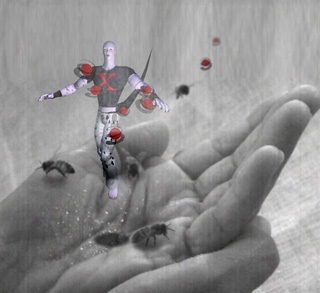
Andrew Burrell and Trish Adams are winners of the Australia Council's latest virtual worlds arts initiative – MMUVE IT! Their Mellifera project is "an inter-disciplinary artwork exploring cognitive processes and bodily interaction and its relationship to virtual environments". Burrell and Adams will co-develop a neuro-interface to enable inter-world interactions through sensor-based inputs such as gesture, breath, heartbeats, electrical brain and nervous system activity. Their progress can be followed via the Mellifera project site, and an OzCo announcement can be found here.
|

Little Big Planet has clearly narrowed the gap between gameplay and content creation, so much that level-editing becomes a function of play. Recently however advances in computer vision, multitouch surfaces and tablets extend this reach even further bringing deeper immediacy.
Chad Chatterton sends us through a link that expresses this very well, in the form of a new game called Crayon Physics by KlooniGames made for the Microsoft Surface and normal mouse-input on a Windows PC.
While not using a tablet, PS3 researchers are exploring interaction along a similar vein. Using the new Playstation Eye camera and some computer vision software they provide a means for the gamer to work directly with pen and paper (thanks Chris).
Worth mentioning is that this kind of interaction model already has a precedent in the art world. Recently I saw Zachary Lieberman perform Manual Input Sessions, using similar techniques. Using his own software, OpenFrameWorks, Zach uses a brush and ink, paper cut-outs or the silhouettes of his hands to build live interaction with a computer.
See a video of Zach's Manual Input Sessions in action here
|

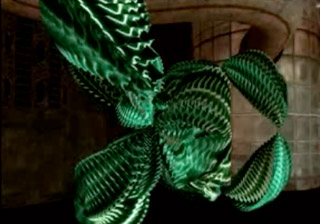
Not Possible IRL is "Dedicated to identifying and sharing well conceived and realized visual arts n' things in second life which would not be possible in real life: architecture, landscaping, art, animations, fashion, particle effects, building tools and scripts." Two featured works you have to check out are Senuka Harbinger's SENASY (studies of fractals and formulaic art) and Keystone Bouchard's Gallery of Reflexive Architecture.
|

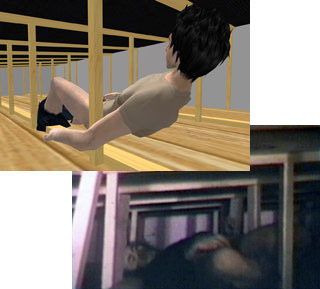
While virtual environments like Second Life offer artists a new platform for the creation of original works, it's always interesting to see the past being reinterpreted. I'm pretty sure it was Marshall McLuhan who said all new media consumes its predecessor's content before settling on a new form, and we have witnessed his observations unfolding with the Radio > Television > YouTube evolution. Eva and Franco Mattes (of 0100101110101101 fame) have taken this ethos of appropriation to heart in their ongoing Synthetic Performances. Seminal performance works from the 1960’s–80’s have been re-staged in Second Life and exhibited in-world and on their web site. Re-performances to date include Joseph Beuys' 7000 Oaks, Valie Export's Tapp und Tastkino, Vito Acconci's Seedbed (he was a bad boy) and Chris Burden's Shoot. More images after the jump, or you can skip right to their site. If you have an SL account, click here to visit the 7000 Oaks performance in Second Life.
|


Not a Wall is an unscripted performance piece I conducted in Half-life 2 back in July 2006 and is based on Magritte's The Treachery Of Images. The work's protagonist will not attack unless attacked and must return to the graffiti until complete. The final killer, inspired by my actions, falls fowl of his own passivity. Not a Wall is one of a series I’ve produced for a soon to be completed research degree on game surveillance technologies and techniques.
|
|
archive: Interactive Second Life Sculpture Park
|
|

Adam Nash (Adam Ramona in SL) has been applying his expert real-time 3D artisan skills within Second Life. Based out of Marni Island, Adam has installed a series of interactive and highly immersive audio-visual sculptures that test the limits of SL’s scripting and audio capabilities. His works are important in helping establishing multi-user virtual envoronments (MUVEs) as sophisticated, collaborative spaces for artists. 
Anahata The Mute Swan, by Adam Nash
Adam and I collaborated on Cantata Park (below), an interactive, cut-up narrative sculpture located on my piece of Marni. The cooprerative build took place over a week or so with only the audio recordings conducted face-to-face. Design, script/audio embedding, testing and fixes all took place via SL and Skype. 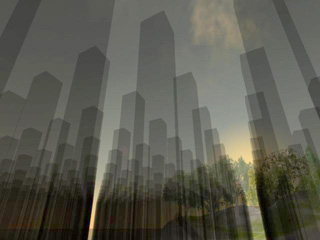
Cantata Park, by Chris Dodds (Mashup Islander in SL) and Adam Nash
Read on for more of Adam's work, plus SLURLs and a link to an interview by Gary Hazlitt.
|

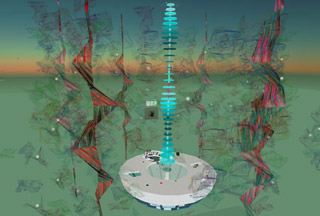
(Image courtesy Gary Hazlitt) DC Spensley (aka DanCoyote Antonelli in Second Life) has coined the term Hyperformalism to describe abstract, pc-based artworks: Hyperformalism is a critical construct that may be employed by to describe a late 20th century, early 21st century mass art phenomena consisting of scores of personal computer users generating abstract, often spacially unique artworks with software tools. Gary Hazlitt recently reviewed Antonelli's multiuser SkyDancer performance in Second Life, and you can visit the Museum of Hyperformalism for older works.
|

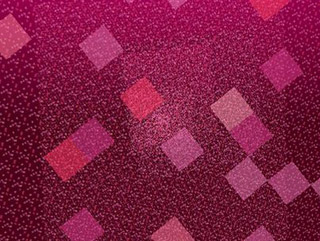
Performance artist and theorist Adam Nash, has launched a new research blog investigating "realtime 3d, single-user and multi-user worlds" as art engines. Adam has some interesting observations on virtual location, infinite space, and why Second Life's recent performance initiatives are lacking. I’m conducting similar research as part of my Masters degree at RMIT University and I'm interested in receiving submissions of simulated performance work for review. I’ve coined the moniker “Simformance” as a descriptor, with Joseph DeLappe’s Dead-in-Iraq one of the more powerful examples of the genre. Put simply, a simformance is an avatar-driven, performance-based artwork conducted inside a virtual environment. Suggested links and comments can be sent to chris(at)iconinc.com.au
|


Dead-in-iraq, by artist Joseph DeLappe, is a performance piece conducted inside the US Army recrutment game, America's Army. I enter the game using as my login name, "dead-in-iraq" and proceed to type the names using the game's text messaging system. As is my usual practice when creating such an intervention, I am a neutral visitor as I do not particate in the proscribed mayhem. Rather, I stand in position and type until I am killed. Upon being re-incarnated I continue to type.
|

From Lost Garden...
"This
essay describes a game play notation system that can be used to record and
analyze any game. It turns out that games can benefit greatly from the use of
a symbolic notational system that describes the rhythm and flow of a game play
experience."
|

The NEtROBOt project uses AIBO pets as an interface to virtual worlds. In this case AIBO avatars reflect the actual AIBO's movement via a real-time web3d world. Feedback is both ways, so a dancing actual AIBO syncs with its virtual friend and vis versa. I'm taking bets now on when the first remote-hacked AIBO starts messing with its master.
|
 delire (Julian Oliver). 1999-2000
delire (Julian Oliver). 1999-2000
Hosted
downloads: quicktime movie, *.pak, *.bsp, *.map.
Runs in Half-life 1.0.16
Mutiuser
Half-life engine used as a real-tme audio performance environment. >The third in a series of works by Oliver exploring use of the game as a 3D compositional and performance tool.
Related works include:
q3apaint
q3apd
fijuu
Acmipark
|

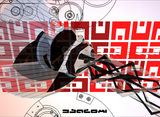 fijuu is a game based audio/visual performance engine by delire+pix. Using a PlayStation2 style controller players deeply manipulate 3D instruments to make improvised music.. fijuu is a game based audio/visual performance engine by delire+pix. Using a PlayStation2 style controller players deeply manipulate 3D instruments to make improvised music..
This project was built from the excellent opensource engine nebula and is played by two players on the same machine. fijuu has appeared at both sonar and the Neuchatel International Fantastic Film Festival.
|
|  |
|
There isn't content right now for this block.
|
|

